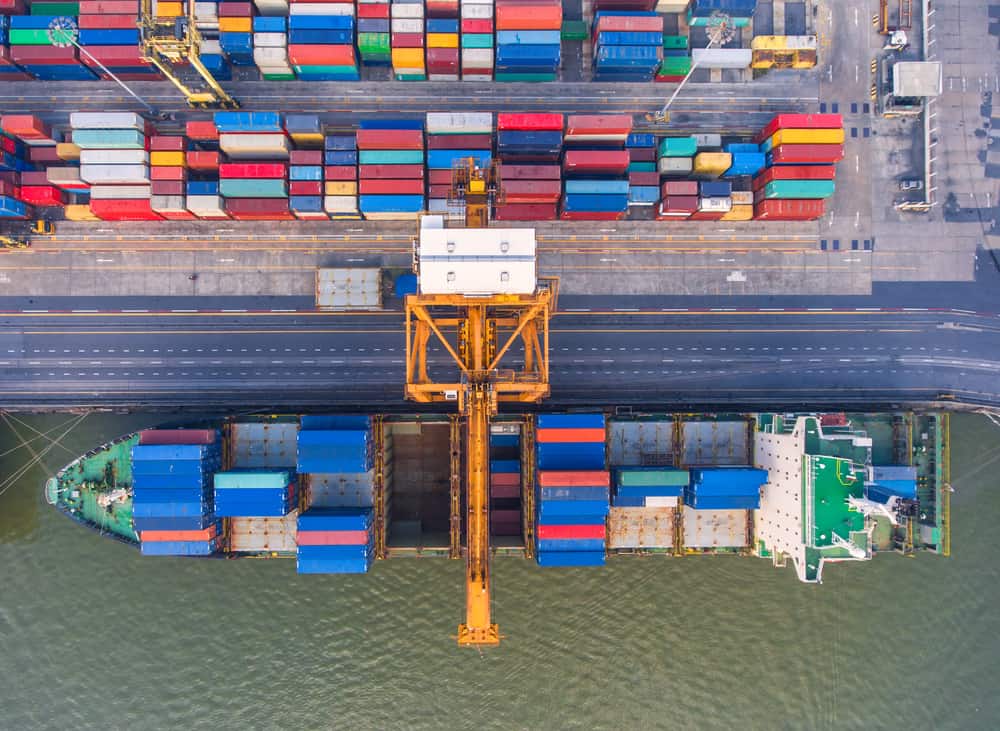After years of struggles, huge losses (12 of the top 25 operators lost $13 billion in the third quarter of 2016), and bankruptcies, 2017 kicked off with full speed for Asia containerized imports. One of the biggest contributors to this was the Chinese New Year falling on an earlier date this year. It almost combined with the Christmas season, and helped keep the volumes at higher levels in a traditionally slow season when many companies are busy with inventory, and most of the shipping plans used to be delayed for January. This was not the case in 2017. Importers were busy with bookings and shipment planning in order to minimize the effect of the factory closures due to the Chinese New Year. We started the year with very strong demand, and some weeks with space scarcity. This affected the rates and they have had upward movement since the beginning of January. There were successful rate increases. According to Shanghai freight index, the USEC rates are 51% higher than last year, and USWC rates are 57% higher than what they were last year.

The below chart clearly shows that the expected demand decrease, and consequently, its effect on rates right after Chinese New Year, is in play. This is a temporary decrease, but we will not see a jump on the space demand until mid-March.

In my opinion, the following factors will shape 2017 for imports:
- Supply and Demand: The industry has been plagued with overcapacity, and it is the single biggest factor putting rates at these levels. I had written many articles and given inputs regarding this matter, and I believe unless there is a dramatic change between vessel supply and market demand – other than seasonal increases – the market will not be strong.
- Vessel order book for 2017: According to IHS, there were 72 ships ordered in 2016, versus 232 in 2015, but previously-ordered vessels are coming into service very fast. According to Alphaliner, the tonnage delivered in 2017 will be twice the scrapping forecast (one hundred further Panamaxes will need to be scrapped before the segment can regain its footing again) this year. Global capacity is expected to grow 3.4% this year, which might prolong the overcapacity and will delay the market recovery. However, the current order book-to-fleet ratio plunged to 17.1% from a peak of 64% recorded at the end of 2007 – in the first seven months of 2016, only 202,000.

- Demand: The U.S. GDP growth rate is expected to be 2.3% in 2017. Unemployment will be around 4.5%. These are positive indicators for the overall economy in 2017. U.S. imports are expected to grow 4.6% in the first 6 months of 2017. Cargo volumes will increase year-over-year in several months during the start of the year, rising 6.6 percent in January, 7.8 percent in March and 8.2 percent in April. Volumes will decline by 0.6 percent in February, compared to the same month in 2016, but increase by 2.3 percent and 4.3 percent in May and June.
- Alliances: 3 major alliances (Ocean Alliance: China Cosco Shipping, with Evergreen Line, CMA CGM, and OOCL, The Alliance: Hapag Llyod, NYK, K-Line, MOL and YML , and 2M: MSC/MAERK) will be controlling 88% of Asia-North America trade. In order to save costs, the steamship line is forming alliances, and this will be one of the biggest changes in 2017. There will be less players, which will mean more control on market rates and better pricing strategies. This may mean successfully implemented rate increases and higher rate levels. This also means less frequency of the services and transparency.
Based on the above facts and arguments, in 2017, the freight rate market will definitely be much better than in previous years. For the first time in many years, market indicators are good. Global demand is expected to be much better. U.S. economic indicators are promising. The biggest unknown at the moment is the effects of protectionism. Although the overcapacity problem, which brought the market down, will not go away completely this year, it will be in a much better shape than previous years. We anticipate space issues, especially for USEC. Small BCOs with direct carrier contracts might not be granted all the space they asked for from the carriers (carriers will go back to space allocation based on the profit maximization per TEU.) If the carriers can catch momentum prior to contract season, a very strong peak season is on the horizon. We are forecasting carriers will be able make more successful increases this year, and that they will be able to hold the market freight rate levels at much higher levels compared to 2016, while obtaining vessel space will have more importance versus getting the cheapest rates.
- 330shares
- 277LinkedIn





